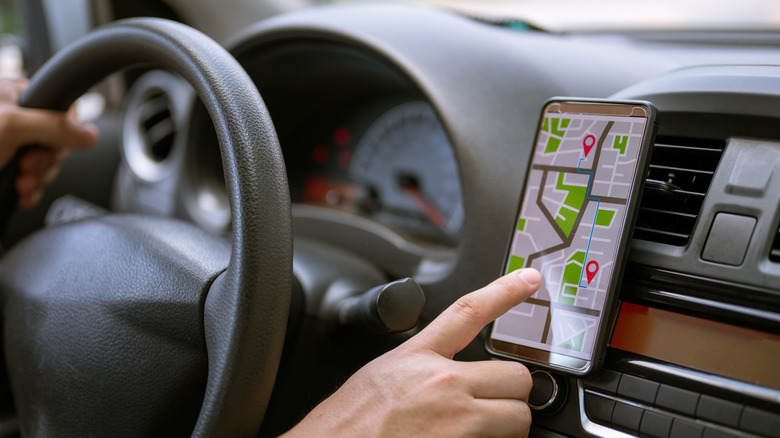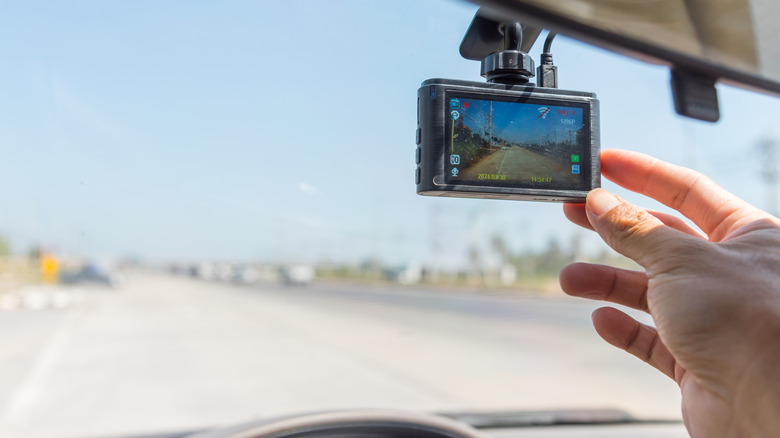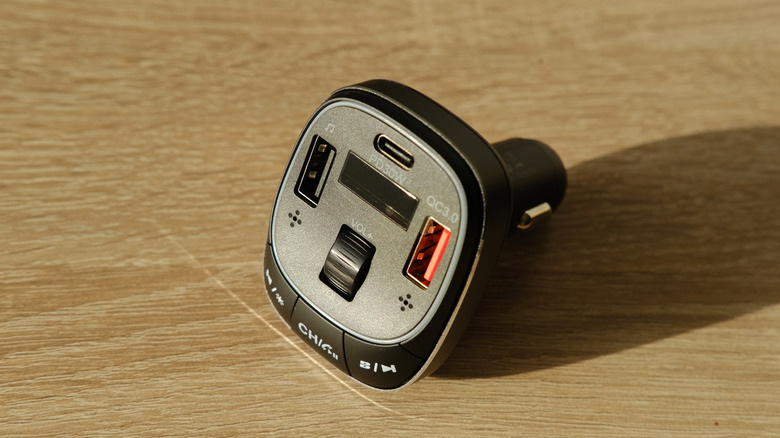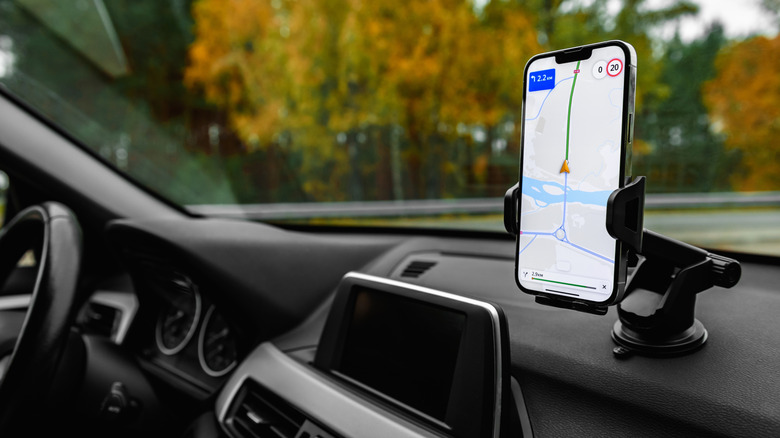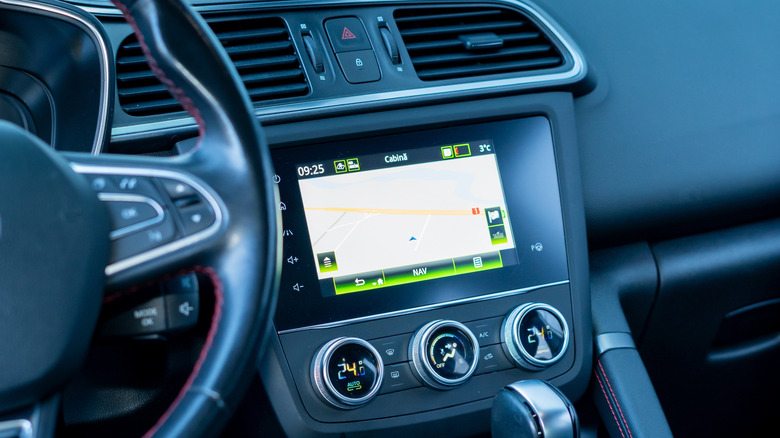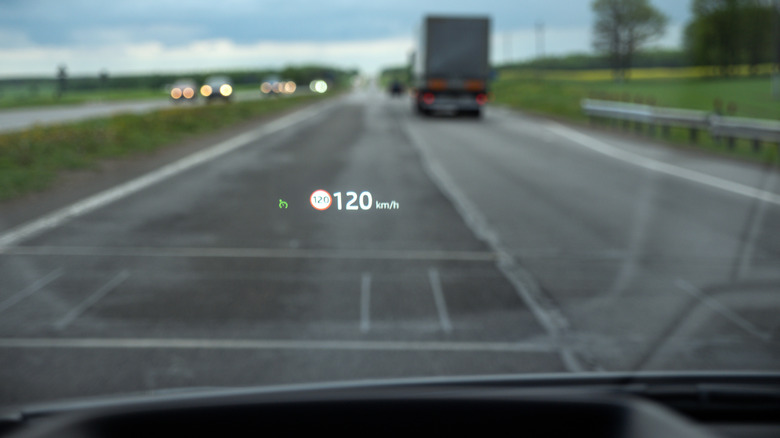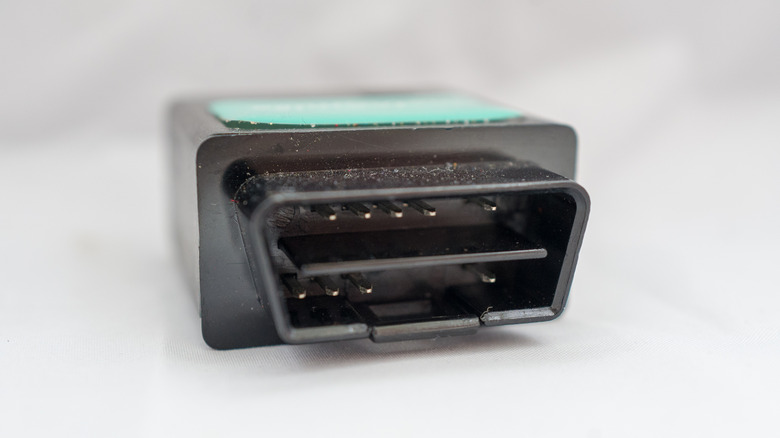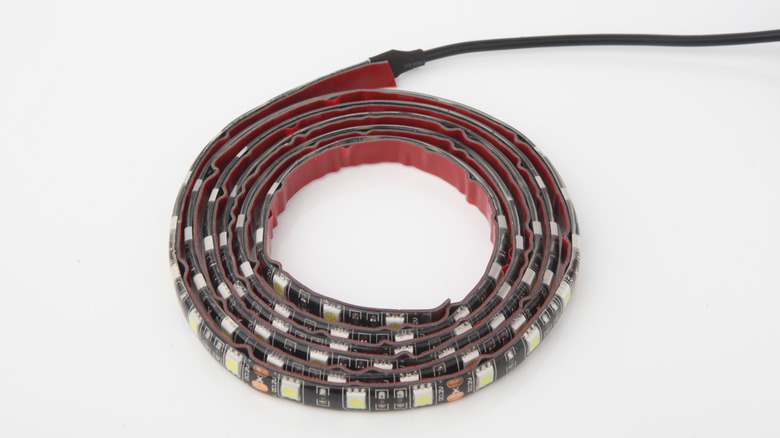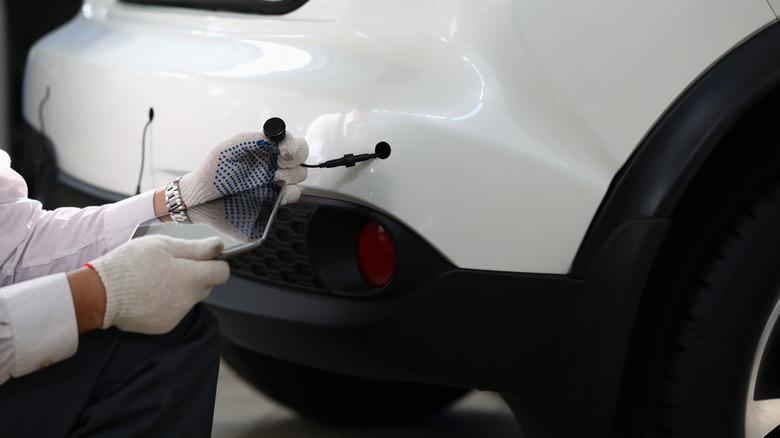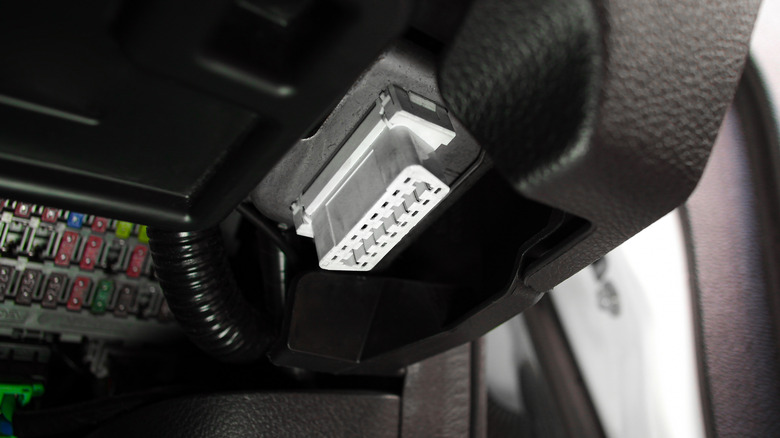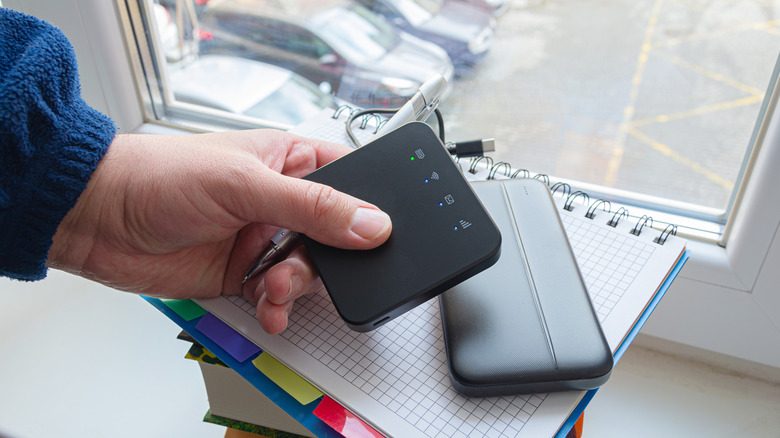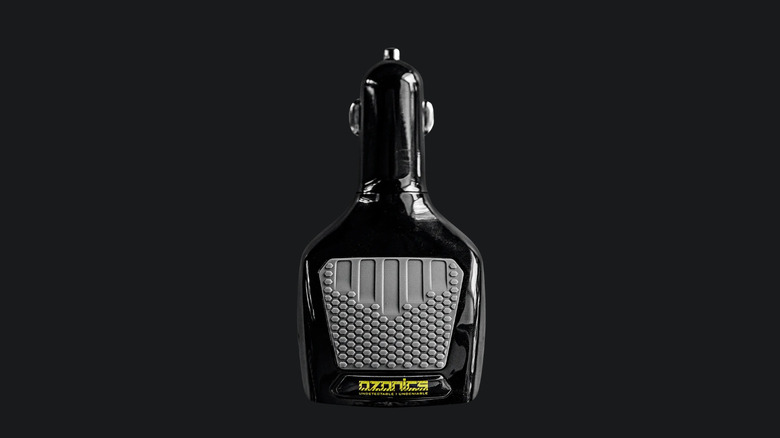11 Tech Gadgets To Make Your Old Car Feel New
We may receive a commission on purchases made from links.
Life is way too expensive right now. Inflation and corporate greed has made everything from eggs to housing feel like a luxury. Cars especially. There's a litany of reasons you shouldn't even bother buying a vehicle in 2024. If it's not the deplorable state of car financing and pandemic-induced supply disruptions, it's the uncertainty around new EV technology juxtaposed with imminent ICE bans. In the meantime, you have to make your old clunker last as long as it can. There's no better way to give an old car a new lease on life than with a little tech gadget makeover.
The most enticing aspect of a new car is the smart features that come with it. Fortunately, virtually all those things can be retrofitted onto your existing vehicle with a bit of cash and some elbow grease. Some only cost as much as a nice meal and give you upgrades that would add hundreds of dollars to an off-the-lot price tag. If you're looking to revamp your old vehicle without shelling out hundreds, here are 11 tech gadgets in particular to make that old car feel young again.
A dash cam and backup cam
Dash cams are arguably no longer a luxury feature in this day and age — they're now a must-have to protect you against liability and insurance fraud. Until you get a new Tesla with more body cameras than a horde of paparazzi, buy yourself a decent dash cam.
The options are endless, from the name brand Garmin Dash Cam Mini 2, to subscription-based ones like the Nextbase iQ. In fact, we've done the research for you already and found five of the top-rated budget dash cams out there. Frankly, the hardest part is choosing which one to buy, since the setup won't take you more than 10 minutes. Driving becomes a lot less stressful having on-demand, incontrovertible proof in your favor when someone keys your vehicle or veers into your lane.
In addition to this, we recommend a backup camera and sensor. Don't get the impression that this is a luxury feature that's going to eat into your pocketbook, a decent backup cam can be had for less than $50, like this LK3 model. We'd argue that's a lot cheaper than having to go to the body shop after you sideswipe a parking garage pillar trying to back into a space. If you wanna spend a little more, you can buy a camera with distance sensors to know exactly how close you can get to that curb before you lose some paint. Diagnosing the issues with them is pretty easy, too.
A Bluetooth adapter
Most used cars from just 15 to 20 years back missed out on today's Bluetooth, music streaming goodness because of their old radios, CDs, and cassette players. If you haven't grabbed a Bluetooth conversion kit yet, you're seriously missing out.
The easiest option that works in most vehicles is a 12V cigarette lighter Bluetooth adapter like this generic Imden for $17.99. It transmits your Bluetooth music over a radio frequency of your choosing so you can tune in to whichever gives the strongest signal. There's also two USB-A ports for charging and buttons to change the song and accept calls. If your phone doesn't have enough storage for music, then you can load up a USB drive with your favorite tunes and plug it in.
If you have a cassette player, then you can use something like this Arvista Bluetooth adapter for $39.99. It may even end up sounding a tad more crisp since you won't be listening to music on staticky radio waves. If you've got an AUX line, even better. Try this Comsoon adapter for $19.99 or the Monster Bluetooth audio receiver for $14.99. AUX adapters are the best in terms of audio quality since music fidelity loss will be minimal from Bluetooth, and they have the added benefit of freeing up the 12V for a faster phone charger.
A phone holder
Sure, a phone holder is so common in vehicles these days that the vehicles without one are the odd man out. They're dirt cheap, and you can mount them anywhere — on the vents, on a suction cup, or even in a cupholder. However, aside from the added benefit of mounting magnets, most of these phone holders are a wasted opportunity to pack more functionality into a single device. To avoid all the hassle of plugging in your phone while driving, consider a phone mount like this BothLin that wirelessly charges your Qi-enabled phone at 15W.
Some mounts take a slightly different spin on the standard, such as this Loncaster holder. Your phone sits on the dash in horizontal orientation, creating an quick-and-dirty infotainment or GPS screen. Owners of Samsung foldables can even get this Samsung Wireless Car Charger mount that holds their phone in the unfolded position to make the most of that massive screen real estate. Check out our other recommendations for phone holders here.
A touchscreen car receiver
Bluetooth adapters and phone holders are really only a temporary, surface-level retrofit, and they lend themselves to people who want baseline smart features for a fraction of the price and a painless DIY install. The biggest, most notable upgrade you can make to an old car (one that may be worth forking over even more for the installation) is to remove the old radio or AUX receiver from your DIN slot and get a dedicated infotainment car receiver.
Try something like this $284.99 BOSS double DIN on for size. If it's not for you (or you've only got a single DIN), then make sure the one you choose supports your phone operating system. The BOSS, in this case, happily provides both Apple CarPlay and Android Auto.
Yeah, they are expensive, and yes, the installation adds even more cost to an already costly investment, but this can make an old vehicle feel brand-new. Not only do you get a touchscreen hub for everything — radio, Bluetooth audio, phone calls, digital assistant, GPS maps — but it can integrate with your existing dash and backup cameras. Even if your vehicle already has a touchscreen receiver, there's a good chance it's a janky, outdated one the car manufacturer threw in as an afterthought, one lacking security updates and support for modern protocols. In that case, an upgrade might be in order.
Since the smartest of smart features in most cars these days hinge around a touchscreen interface such as this, a decent receiver takes you halfway to a smart car for a fraction of the price.
A HUD (heads-up display)
A HUD sounds like something straight out of sci-fi, like all the hologram visuals inside Tony Stark's helmet in "Iron Man." The concept behind a HUD, however, is fairly low tech and well within a budget reach. You're just projecting an image onto a transparent surface so it looks like a floating digital visual indicator. This ACECAR HUD is one of many examples, and costs all of $32.99. To pull off this sci-fi HUD effect, it shines your speedometer, RPMs, and other cluster readings onto a reflective adhesive patch on the windshield. So, you can keep your eyes on the road and your speed at the same time.
ACECAR'S video demonstration shows that it's plenty visible day and night thanks to automatic brightness adjustment. It takes minutes to install according to reviewers, and only requires an OBD-II for power and data. Barring that, it can use GPS to track your speed, but this will include a delay and be less accurate. The only downside here is that it's useless without the right reflection angle the passenger won't be able to see it, and a second driver who's who isn't your identical twin may not be able to, either.
A vehicle tracker OBD-II conversion kit
Back in the day, you had to have some expensive tech (and probably FBI security clearance) to keep track of a vehicle remotely, but these days everyone's got a tracking device in their pockets. You can even track a car with an AirTag, though it will severely limit your range and depend entirely on how many people nearby own an Apple product. For those who need to know exactly where their vehicle is at all times, you'll require a GPS tracker that plugs into your car's diagnostic ODB-II port. We recommend the Bouncie, but there are tons of options to choose from.
OBD-II trackers are on a level AirTag can never hope to reach. In addition to keeping tabs on your car 24/7, they can give accident notifications and alert you when your vehicle has left a predetermined Geofence area. OBD-II diagnostic tools plug in under the dash, out of sight, thwarting ne'er-do-wells and/or disobedient teen children who might check the car for tracking devices before they drive it away.
Just one noteworthy asterisk here: almost all OBD trackers come with mandatory subscriptions. In the case of the Bouncie, you're looking at $8 a month, and some options can get uncomfortably close to $20. An AirTag, despite its limitations, is free to use for life. Though to be fair, adding yet another subscription to your life is definitely cheaper than replacing a stolen vehicle.
An LED interior light conversion kit
Tesla's Cybertruck has been, without a doubt, Elon Musk's greatest folly. Whether we're talking about its controversial design or its seemingly endless recalls, its been a flashpoint of negative press for the innovative car company. One thing it did get right was the customizable interior LED lighting that really helps it live up to its cyberpunk inspiration. If you're itching to feel like you're driving a Rayfield from "Cyberpunk 2077" but don't have almost $100,000 to throw at a Cybertruck, then an aftermarket LED conversion kit should do the trick.
Options are endless in this category, so it's really down to whichever one has the best reviews and a price that fits in your budget. We recommend the Govee LED light strips with a 12V plug in. You can choose from 16 million colors via your phone and set the lights to pulse according to the tempo of your music. Just keep in mind that in many cases — depending on factors such as colors and visibility to outside vehicles — you can't have them on while driving. These are really only for the aesthetic when you're parked, but they do that job exceptionally well. Just make sure your passengers don't accidentally step on them while getting in.
Parking sensors
Another smart feature common in newer vehicles are parking proximity sensors for backing up. A backup camera will work fine 99% of the time, but there might be some unseen obstacle — like a curb that's just a little too high — waiting to bloody your bumper. In that case, you can install parking sensors. This Aiuphing kit costs all of $14.90 and gives you everything you need with four sensors, a microcomputer hub, and an LED display with sound warnings.
The installation is going to be quite invasive, since you're going to have to cut holes for all four sensors into your rear bumper, and be 100% sure they're in the right position before you do. This is going to take a lot of trial and error, a lot of calibration, and a lot of patience wiring it up inside your vehicle. However, adding that functionality for $15 plus a weekend DIY project may well be worth it — especially if you don't trust other people to back up your car as well as you do.
If you'd rather not blow holes in your ship, as it were, try instead an external parking aid like this STKR sensor. It's a useful, non-invasive alternative if you've got a tight, everyday parking space like a narrow garage. The latter works for all your vehicles, not just one.
A diagnostic scanner
We mentioned OBD-II ports earlier, but they aren't primarily intended for tracking your vehicle. When a mechanic takes a look at your vehicle, they plug a reader into the OBD-II to get detailed information from the onboard computer. There's nothing stopping you from getting your own code reader and cutting out the middleman, and a plethora of smartphone diagnostic apps will translate the data into plain English for you. If you wanna go a step further and get regular diagnostics on demand, then you'll need a Bluetooth-enabled OBD-II diagnostic scanner.
Try this one for $59.99 from FIXD. It claims to offer quick, easy setup with the ability to translate over 7,000 engine fault codes. So rather than stressing out over that new sound your car is making, or trying to demystify an engine light that just went on, whip out your phone and speak your car's language. The only requirement for the FIXD (and most brands like it) is to have a vehicle that's manufactured in 1996 or later, or 2008 if it's diesel. There is a subscription plan that sends this data to a certified mechanic for a professional opinion, but it's totally optional.
A portable router
Take a lot of road trips and prefer to have data everywhere you go? Sure, you've got your phone's data plan, but that's not always ideal. Spotty connections are going to drain your phone battery, doubly so if you hotspot your data to friends and family. These days, keeping a portable Wi-Fi router on hand makes a lot more sense for those who travel in groups. There are tons of great, affordable options to choose from regardless of your budget.
The investment is worth it for a couple of reasons. One, it allows you to share an unlimited data plan between multiple people, rather buying individual plans for every person. Two, cellular data is inherently more battery intensive, so your phone gets a more stable Wi-Fi connection while your router takes the hit to battery life. Three, it ensures you have a more reliable Internet connection at your accommodations — so no more terrible hotel Wi-Fi.
The only downside is you would need to pay for that plan whether or not you're using it between family road trips. It's also an extra device to charge, carry around, and keep track of. Maybe forgo this one if you'd rather bring back the good old days when road trips were for bonding, not self-isolating distractions.
A 12V deodorizer
Oil diffusers, an aggressive cropdusting of perfume, or the good ol' hanging pine tree fresheners aren't the only things keeping your car from smelling like sunburned leather, and the efficacy of these options may seem questionable. Another solution worth trying is an ozone deodorizer that, instead of adding a new, better scent, aims to kill the existing ones.
These come in the form of a 12V generator that you plug in and forget, like this Ozonics Micro3. People often describe ozone as being pungent, like a distant cousin of bleach, according to the California ARB. Manufacturers claim that ozone generators are almost like odor anti-bodies, targeting and neutralizing the pervasive scent of those McDonald's fries you had a month ago. However, some research suggests they have no odor-removing capability whatsoever, and simply impair your sense of smell.
Full disclosure: ozone generators do have the potential to be harmful to your health, especially if you suffer from breathing difficulties like asthma. However, this warning has only been applied to in-home generators, not a tiny 12V one made for your car, according to Connecticut DPH. There doesn't appear to be any evidence that the latter is a threat in and of itself, though it's probably not worth the risk if you have an especially sensitive respiratory system. In any case, you don't need to leave it plugged in all day. Maybe pop it in anytime there's a bad scent — or if you just like the ozone tang — and set your car's HVAC to fresh air intake for some circulation.
